Tolin's 2024 World Cruise blog posts, Day 44 Feb 22, 2024, Whitsunday Islands, AU, Sailing the Whitsundays
The Whitsunday Islands are 74 continental islands of various sizes off the central coast of Queensland, Australia, 560 miles north of Brisbane. The northernmost of the islands are off the coast by the town of Bowen, while the southernmost islands are off the coast by Proserpine. The island group is centered on Whitsunday Island, while the commercial center is Hamilton Island. The traditional owners of the area are the Ngaro people and the Gia people, whose Juru people has the only legally recognized native title in the Whitsunday Region.
The islands are within the locality of Whitsundays and the local government Whitsunday Region. In 2009, as part of the Q150 celebrations, the Whitsunday Islands became one of the Q150 Icons of Queensland for their role as a natural attraction.
More info: https://en.wikipedia.org/wiki/Whitsunday_Islands
Reefstar Cruises offers a relaxed, comfortable cruise of the Whitsunday Islands including the area's most iconic sites. Our full day tour operates, Monday, Wednesday, Friday and Sunday and is great for all ages. Visit Fringing Coral Reef for a snorkel or Glass Bottom Boat Tour, join a guided bushwalk to the Hill Inlet Lookout and stroll the white, silica sands of Whitehaven Beach. Your day includes courtesy coach transfers, morning tea, lunch and afternoon tea. Come and meet our friendly, knowledgeable crew and join us for a memorable day in the Whitsundays.
More info: https://www.tripadvisor.com/Attraction_Review-g261596-d4229627-Reviews-Reefstar_Cruises-Airlie_Beach_Queensland.html
We are in and on the Great Barrier Reef
The Great Barrier Reef is the world's largest coral reef system, composed of over 2,900 individual reefs and 900 islands stretching for over 1,400 miles over an area of approximately 133,000 sq miles. The reef is located in the Coral Sea, off the coast of Queensland, Australia, separated from the coast by a channel 100 miles wide in places and over 200 feet deep. The Great Barrier Reef can be seen from outer space and is the world's biggest single structure made by living organisms. This reef structure is composed of and built by billions of tiny organisms, known as coral polyps. It supports a wide diversity of life and was selected as a World Heritage Site in 1981. CNN labelled it one of the Seven Natural Wonders of the World in 1997. Australian World Heritage places included it in its list in 2007. The Queensland National Trust named it a state icon of Queensland in 2006.
A large part of the reef is protected by the Great Barrier Reef Marine Park, which helps to limit the impact of human use, such as fishing and tourism. Other environmental pressures on the reef and its ecosystem include runoff of manmade pollutants, climate change accompanied by mass coral bleaching, dumping of dredging sludge and cyclic population outbreaks of the crown-of-thorns starfish. According to a study published in October 2012 by the Proceedings of the National Academy of Sciences, the reef has lost more than half its coral cover since 1985, a finding reaffirmed by a 2020 study which found over half of the reef's coral cover to have been lost between 1995 and 2017, with the effects of a widespread 2020 bleaching event not yet quantified.
more info: https://en.wikipedia.org/wiki/Great_Barrier_Reef
What makes Whitehaven so unique is the 98.9% pure silica sand that graces the 4-mile long beach. Silica sand comes from eroding quartz, so there is much speculation about where the sand came from, as it is the only area in the Whitsundays that consists of this fine powdery substance. The natural formation of the island forces tides in and out of Hill Inlet, creating the iconic swirling layers of sand.
Varying shades of blues, greens and whites pop when the tide is just right, but there is almost never a time where the inlet doesn't look amazing. The almost pure silica is so fine and clear that it doesn’t retain heat, and the white color reflects the sun’s rays. Although the sun can make most beaches quite hot, even in this climate the sand stays comfortable and cool under your feet.
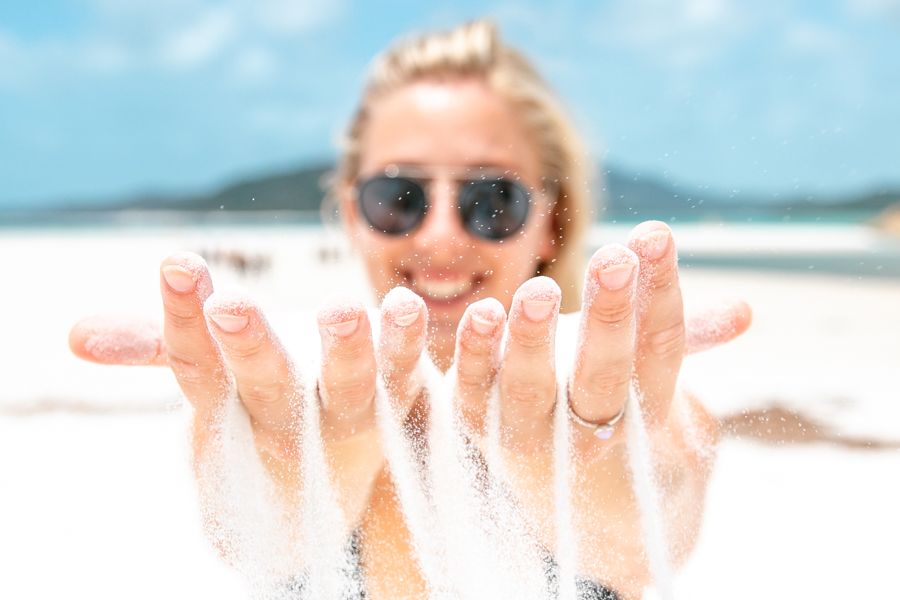
Walking on Whitehaven is like walking in a dream, but it can be a nightmare for your camera, so make sure you keep your equipment safely stored away when not in use! You can also polish your jewelry, and some tour guides claim you can also brush your teeth (although we don’t recommend testing this one). While it can be tempting to take home a souvenir, you can’t take any sand with you, as it is protected under the Great Barrier Reef National Marine Authority, and situated in a national park.
Silica sand is widely known for its use in making glass, heated to high temperatures of 4,172 degrees Fahrenheit. Whitehaven sand is so fine, it actually squeaks under your feet as you walk. Locals and tour operators affectionately refer to this phenomenon as “barking spiders,” which travelers seem to get a kick out of.
More info: https://sailing-whitsundays.com/article/Whitehaven-Beach-Everything-You-Need-to-Know
Three "choppers" with apparent favorite beach segments
Two TPs with vertical connector poles for sun shelters ??
The Great Barrier Reef is the world’s largest coral reef, and home to the most diverse plant and animal life on the planet - including spectacular coral formations, hundreds of species of fish, turtles, manta rays and even visiting dolphins and whales.
Hamilton Island, in the heart of the reef, is the perfect base for exploring this magnificent part of the world. As well as a range of accommodation options and hotels near the Great Barrier Reef, we offer a wide selection of professional, well-organized tours, activities and excursions.
More info: https://www.hamiltonisland.com.au/things-to-do/great-barrier-reef










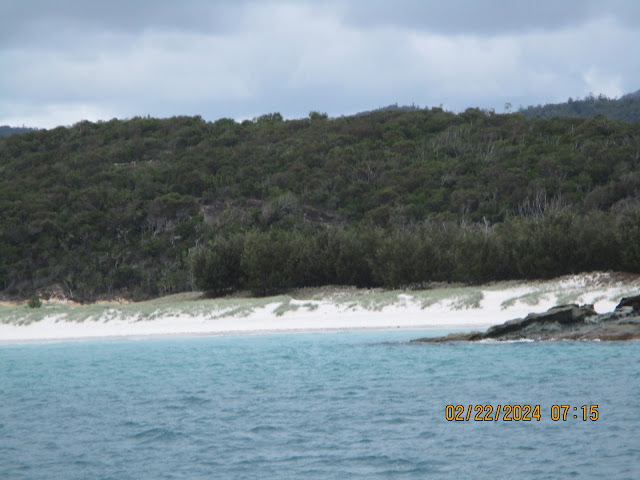


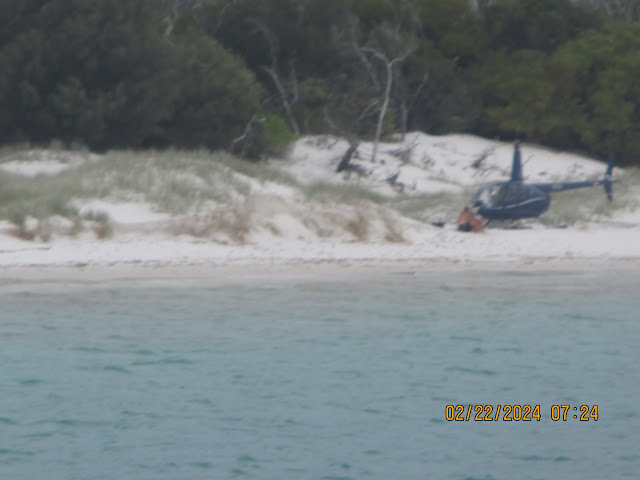
















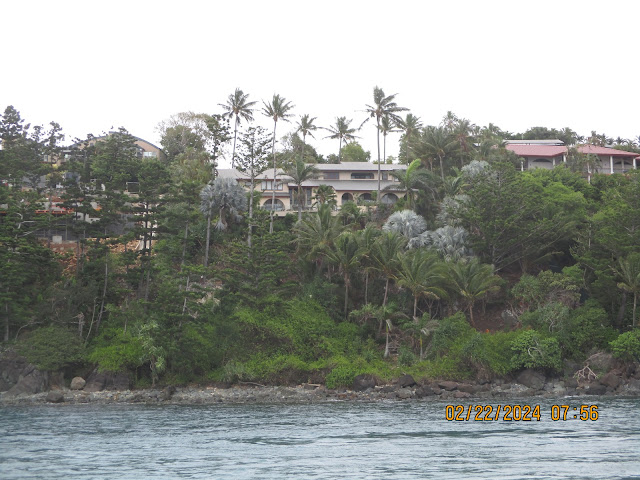

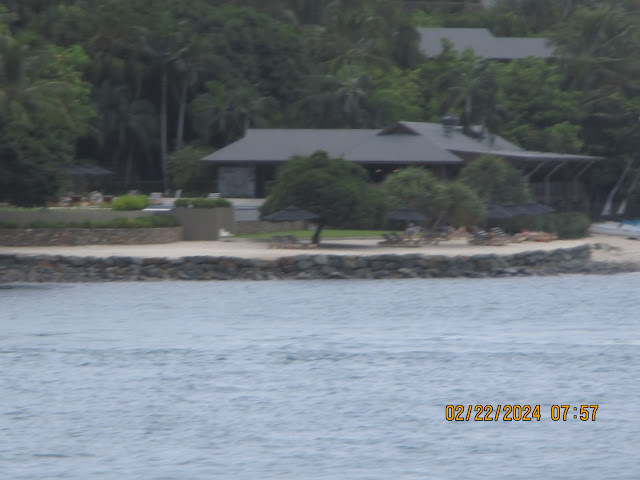







Comments
Post a Comment